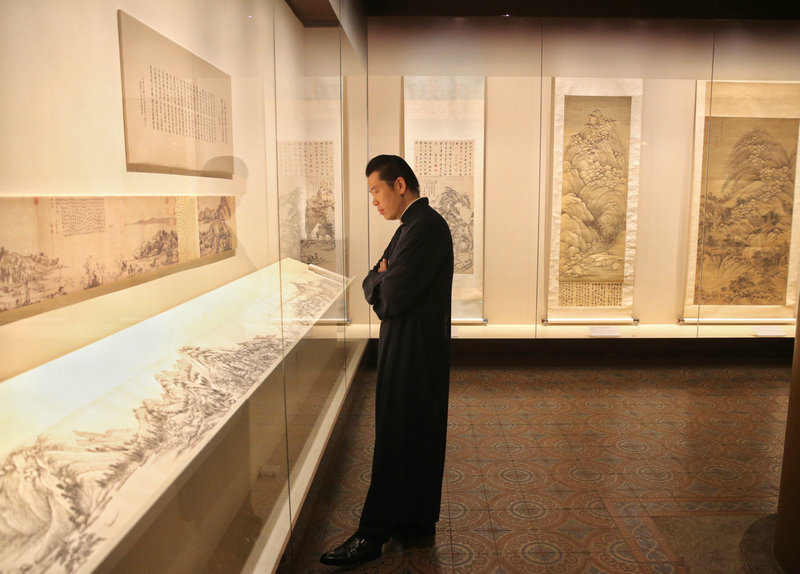 |
|
A visitor at the ongoing exhibition in the Palace Museum in Beijing. The display has around 110 artworks by the "Four Wangs" of the early Qing Dynasty (1644-1911). JIANG DONG/CHINA DAILY |
And Wang Yuanqi (1642-1715), who was also the grandson of Wang Shimin, was a master of textural shading and famed for his vigorous brushwork and ruminant compositions, which is probably best highlighted in his painting, Robust and Vigorous Landscape.
Unlike many literati painters in ancient China, who lived their lives as virtual hermits and shunned politics, the Four Wangs' destiny was quite different.
The curator explains that one of the reasons why they were so revered in the Qing Dynasty was because of the huge sway they held in the imperial palace. For instance, Wang Hui's painting Southern Inspection Tour (Nanxun Tu) featured a grand procession of Kangxi emperor.
Some of their students were later hired as court painters, and were favored by the emperors, who labeled their works as "orthodox".
Nevertheless, this connection with the imperial court once made some critics doubt the real artistic value of work of the Four Wangs. In the late Qing Dynasty, prices of their works rocketed in antique markets, which were ridiculed by people at that time.
"All these rights and wrongs have passed," Tian says. "What's important for us is to take aesthetic enjoyment from their individual legacies."
The Palace Museum now houses over 800 works by these artists, the largest number of any museum in the world.
Nearly 700 of such works were included in a 10-volume panoramic album of works by the artists, which was published on Tuesday to offer a more detailed reference work for scholars. Some 277 pieces-including Southern Inspection Tour-have never been publicly published before.
"An exhibition is also an opportunity to promote related academic research," Shan Jixiang, director of the Palace Museum, says. "It can also raise public awareness about traditional fine art."